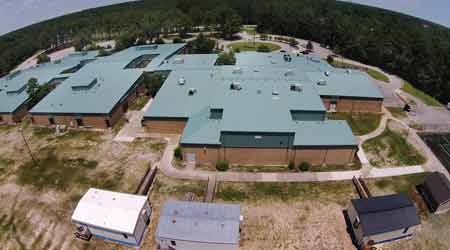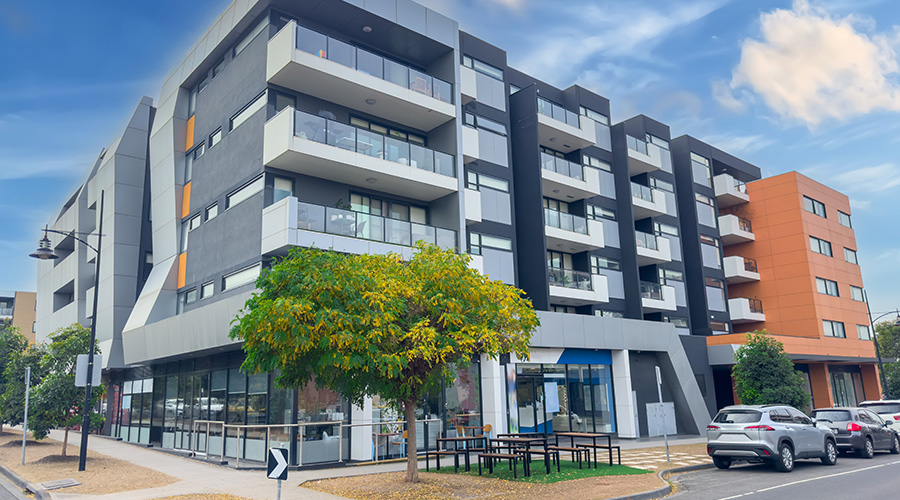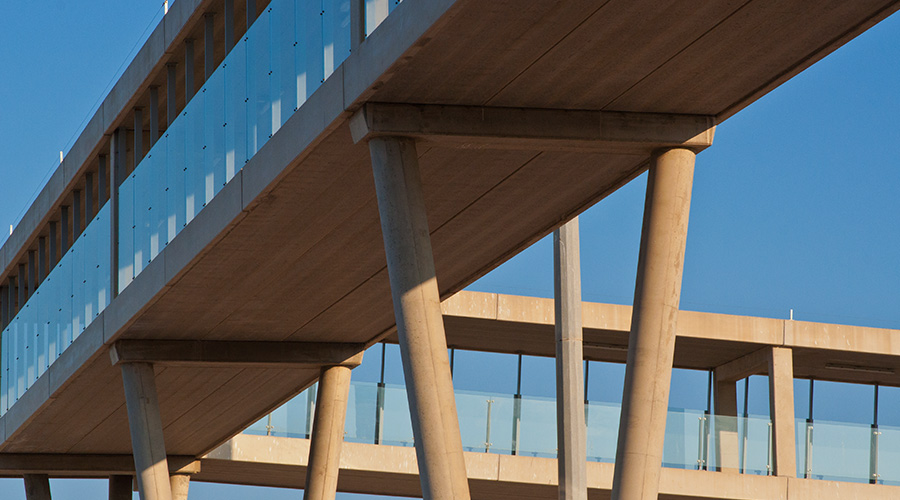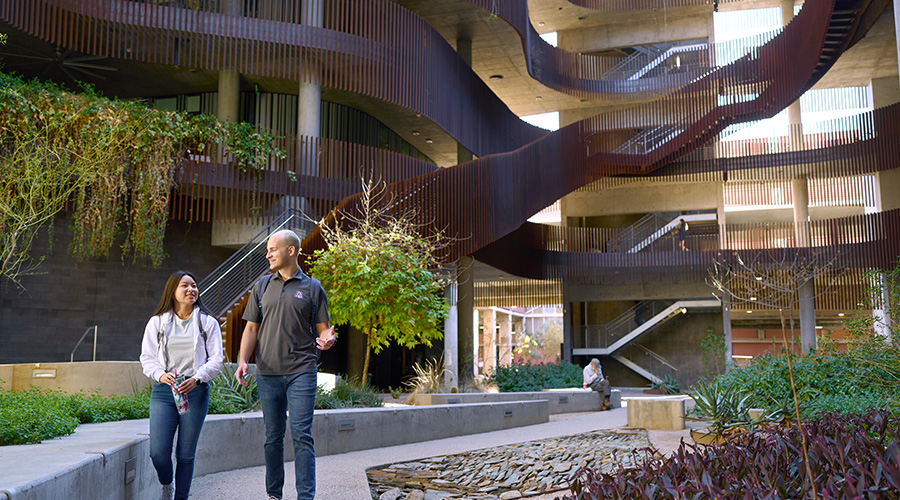 The South Brunswick (N.C.) Middle School replaced old, leaky flat roofs with more than 100,000 square feet of slightly sloped metal.
The South Brunswick (N.C.) Middle School replaced old, leaky flat roofs with more than 100,000 square feet of slightly sloped metal. Advances in Technology Bring Innovations in Metal Buildings, Roofs
Three major advances have allowed metal to provide solutions for just about any type of building.
In the late 1940s, two companies started a new construction-related industry. It was a manufacturing business that designed and manufactured steel structural systems and related covering components to provide a pre-engineered metal building. The new pre-engineered buildings offered the advantages of standard building details, standard framing systems, and light gauge metal roof and wall panels. The cost of this system, including labor cost to erect, along with the shorter time to construct, made this new building system attractive to many industrial and government building owners.
Today, metal building products are well established. In particular, metal roofing provides a solution to problems with flat roofs. But metal roofs were not always a standalone product.
As the then-new industry enjoyed the industrial growth that followed World War II, it expanded through the 1950s and 1960s. The two companies took a sales approach that involved working with independently owned general contractors by providing a building package that provided the structural, wall, and roof components in one simple package, complete with all engineering. The contractor just needed to provide foundations and a floor slab and then could add whatever interior components the end owner needed. The manufacturers made dealership arrangements with these contractors, allocated a sales district for each individual contractor, and assisted with marketing and sales, along with supplying the metal building package. It made for a very good, sustainable, and profitable relationship for all parties.
Advances in technology
After over two decades, pre-engineered metal buildings were being used for larger, more complicated, and higher profile projects, requiring more sophistication of engineering and better roof and wall products. In addition, building owners began to request the contracting market to provide stand-alone metal roof systems that would provide engineering, details, and coatings that would last more than 20 years. During this time, and due to pressure to make an even better product, the industry, now with many manufacturers and related associations, made three distinct additions that kick-started and revolutionized the metal roof industry.
1. Galvalume coatings. The steel industry worked on developing galvanic coatings that could be applied to the light-gauge carbon steel coils that would be more protective of the base metal than the zinc only coatings (galvanized) that had been used for decades. During this time, Angelo Borzillo of Bethlehem Steel developed a 55 percent AL-ZN coating that married the best protective qualities of aluminum and the healing properties of zinc into a product called Galvalume. This coating was commercially introduced to the metal roof and wall industry in 1972 and has been the predominant base coating since then. In 2013 a forensic study was commissioned by the Metal Construction Association (MCA) and BIEC International to study 25- to 35-year-old Galvalume coated roofs. The research indicated that these roofs will last well over 60 years, and in most cases well over 100 years.
2. Concealed fastened roof clips. Because the original fastening technique of drilling a fastener through the face of the metal roofing panel to attach it to the structure below caused fastener leaking due to panel expansion and contraction for panel runs exceeding 20 feet, the industry developed a roof clip that attached to the structure below the surface of the metal roof. This clip was also developed to allow for the normal expansion and contraction due to thermal changes in the metal roof. The new clip design eliminated the problem of fasteners loosening and creating elongated holes, both sources of roof leaks in the original thru-fastened roof systems. With the new clips, metal roofs could be designed in longer lengths without the problems associated with thermal forces on the metal roof.
3. Retrofit metal roof systems. In the late 1970s, building owners were inquiring whether it was possible to convert a flat conventional roof to a sloped metal roof. The building roofs that were constructed in a flat profile, mostly built-up roofs installed in the 1950s and 1960s, were encountering problems as the membranes deteriorated due to UV radiation and natural aging, along with the problems caused by these flat profiles allowing water to pond on the roofs. The success of the metal roofs on pre-engineered metal buildings during that same time led building owners to ask whether this system could be adapted over an existing flat roof. The first such roof was installed in Wilmington, Ohio. The retrofit metal roof industry was launched. Since that time, this market has grown throughout the industrial, institutional, government, and medical construction communities.
Related Topics:













